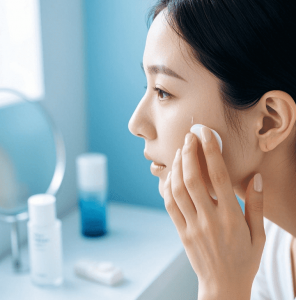In the growing world of natural ingredients, Kaempferol Sophora Japonica Extract is gaining attention for its multifunctional benefits across the nutraceutical, cosmetic, and food industries. Extracted from the flower buds of Sophora japonica (also known as the Japanese pagoda tree), this natural flavonoid offers a perfect combination of purity, stability, and bioactivity. Whether you are a supplement manufacturer, skincare formulator, or functional food brand, Kaempferol represents the next wave of plant-based innovation that meets modern clean-label trends.
What exactly is Kaempferol Sophora Japonica Extract?
Kaempferol is a type of flavonoid compound naturally present in many plants. When derived from Sophora japonica, it is obtained through advanced extraction and purification processes that preserve its natural antioxidant potency. The extract typically appears as a yellowish powder and contains a standardized percentage of kaempferol — often ranging from 60% to 98%.
What makes this extract stand out is its clean botanical origin and high purity level. Unlike synthetic antioxidants, Kaempferol from Sophora japonica maintains the integrity of plant-based nutrients while delivering consistent functionality. This makes it a preferred choice for natural product developers looking to balance efficacy and sustainability.
Why are manufacturers interested in Kaempferol?
Manufacturers are increasingly drawn to Kaempferol because it’s both versatile and naturally stable. It acts as a strong antioxidant, helping to neutralize free radicals that cause oxidative damage. Beyond its antioxidant capacity, Kaempferol has anti-inflammatory and vascular-support properties, making it suitable for use in supplements that target heart health and immune support.
For product developers, Kaempferol also offers excellent compatibility. It can be blended with vitamins, herbal extracts, or minerals to create synergistic formulations. Its plant origin and clean safety profile help brands achieve a natural positioning in the market — a major advantage for clean-label and vegan formulations.

How is Kaempferol extracted from Sophora japonica?
The extraction process involves carefully selecting high-quality flower buds of Sophora japonica, which are rich in natural flavonoids. These materials are subjected to ethanol or water extraction, followed by purification and drying. Advanced techniques such as membrane filtration and recrystallization help achieve higher purity levels (up to 98% Kaempferol).
The key challenge during extraction is preserving bioactivity. Reputable suppliers control temperature and solvent ratios to prevent oxidation and degradation, ensuring that the final product retains its full biological potential. This attention to quality during processing directly influences the extract’s stability, solubility, and color consistency.
What are the main applications of Kaempferol Sophora Japonica Extract?

Kaempferol Sophora Japonica Extract has broad applications across industries. In the nutraceutical sector, it is widely used in dietary supplements for cardiovascular health, immune support, and antioxidant protection. In cosmetics, it’s prized for its anti-aging, anti-redness, and skin-brightening effects.
Additionally, the extract can be found in functional beverages, energy bars, and even natural food color stabilizers. As consumers continue to prioritize natural ingredients, Kaempferol’s multifunctional benefits allow formulators to develop products that are both health-promoting and environmentally conscious.
How does Kaempferol support skin health?
Kaempferol is known for its remarkable ability to protect skin cells from oxidative stress. It neutralizes reactive oxygen species (ROS), helping reduce the signs of aging such as wrinkles and fine lines. It also improves microcirculation, which enhances the skin’s natural glow and resilience.
Cosmetic formulators often use Kaempferol in creams, serums, and anti-aging masks due to its ability to inhibit melanin synthesis. This makes it a natural brightening and soothing agent, especially for sensitive or redness-prone skin. Its mild nature allows for inclusion in daily-use products without irritation.
Is Kaempferol effective in promoting heart and blood vessel health?

Yes. Kaempferol is a well-researched flavonoid with proven benefits for cardiovascular wellness. It helps strengthen capillary walls, improves blood circulation, and reduces inflammation in blood vessels. This makes it useful for dietary supplements targeting vascular health and overall circulation support.
In addition, Kaempferol’s antioxidant activity may reduce oxidative stress that contributes to arterial stiffness or cholesterol oxidation. For B2B buyers, this functionality translates to a strong marketing message: “natural plant-based support for heart and vascular function.”
How should Kaempferol Sophora Japonica Extract be stored and handled?

Because Kaempferol is sensitive to light and air, it should be stored in a cool, dry, and dark place. Exposure to moisture or high temperature may cause oxidation and reduce its activity. Most suppliers recommend packaging the extract in airtight aluminum foil bags or fiber drums to protect it from humidity and UV exposure.
For manufacturers, maintaining stability during production is also important. Processes like spray drying or encapsulation can enhance shelf life and protect Kaempferol from degradation during storage and transportation.
What are the key factors to consider when choosing a Kaempferol supplier?

When sourcing Kaempferol, buyers should prioritize quality documentation and transparency. Look for suppliers who provide a complete Certificate of Analysis (COA), HPLC test results, and third-party verification for heavy metals and solvent residues. Certifications such as GMP, ISO, and Halal also indicate a supplier’s reliability.
Moreover, consider supply stability and customization options. Some reputable manufacturers offer tailor-made purities or particle sizes to meet specific formulation needs. Consistent communication and technical support can make a big difference in ensuring product success.
Why is Kaempferol considered a “future-forward” natural ingredient?
Kaempferol’s rise mirrors a larger industry shift toward plant-based, scientifically backed ingredients. As consumers seek alternatives to synthetic antioxidants and chemicals, natural extracts like Kaempferol offer both performance and sustainability. Its broad benefits — from antioxidant defense to anti-aging and vascular support — position it as a cornerstone compound for next-generation nutraceutical and cosmetic innovations.
For brands, incorporating Kaempferol means embracing a cleaner, greener, and more credible path toward product development. It’s not just a botanical extract — it’s a symbol of where natural science and consumer demand are heading.
- Reference
-
-
Chen, A. Y., & Chen, Y. C. (2020). Kaempferol: A dietary flavonoid with diverse antioxidant and anti-inflammatory activities. Food Chemistry, 324, 126835.
-
Wang, J., Zhang, Y., & Liu, X. (2021). Extraction and characterization of kaempferol from Sophora japonica and its biological functions. Journal of Functional Foods, 79, 104398.
-
Calderón-Montaño, J. M., Burgos-Morón, E., Pérez-Guerrero, C., & López-Lázaro, M. (2019). Kaempferol: A review of its toxicological properties and bioactivity. Food and Chemical Toxicology, 132, 110647.
-
Li, Y., Xu, J., & Jiang, L. (2022). The role of kaempferol in modulating oxidative stress and inflammation in human diseases. Nutrients, 14(4), 859.
-
Kim, S. H., & Choi, K. C. (2020). Kaempferol modulates cell signaling pathways in skin protection and anti-aging. Molecules, 25(20), 4512.
-
Zhang, M., Liu, J., & Zhao, J. (2021). Natural flavonoids from Sophora japonica and their pharmacological effects: A comprehensive review. Phytomedicine, 92, 153739.
-
Rahman, M. A., & Kim, N. H. (2022). Kaempferol and its derivatives: Promising therapeutic agents for cardiovascular diseases. Frontiers in Pharmacology, 13, 904237.
-
Li, W., Wang, Z., & Hu, Q. (2023). Advances in the extraction, purification, and application of flavonoids from Sophora japonica. Industrial Crops and Products, 191, 116013.
-
Zhao, F., Tang, J., & Xu, X. (2020). The beneficial role of kaempferol in immune regulation and chronic inflammation. Biomedicine & Pharmacotherapy, 129, 110479.
-
Singh, D., & Kaur, R. (2023). Application of plant-derived flavonoids in nutraceuticals: Focus on kaempferol. Journal of Food Biochemistry, 47(2), e14188.
-
About Ruiwo:


contact us:
Address:Room 703, Ketai Building, No. 808, Cuihua South Road, Xi’an, Shaanxi, China
E-mail: info@ruiwophytochem.com
Phone: 008613484919413 0086-29-89860070
Hours: Monday-Friday: 9am to 6pm
Post time: Oct-11-2025





